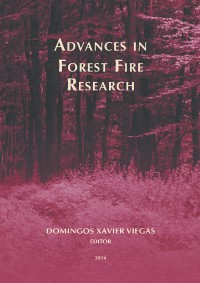Please use this identifier to cite or link to this item:
https://hdl.handle.net/10316.2/34316| Title: | Hardening structures to resist wildland-urban (WUI) fire exposures | Authors: | Manzello, Samuel L. | Keywords: | Wildland-Urban Interface (WUI);firebrands;ignition | Issue Date: | 2014 | Publisher: | Imprensa da Universidade de Coimbra | Journal: | http://hdl.handle.net/10316.2/34013 | Abstract: | Wildfires that spread into communities, referred to as Wildland-Urban Interface (WUI) fires, have destroyed communities throughout the world. In the USA, over 46 million homes in 70,000 communities are at risk of WUI fires [1]. Historically, fire safety science research has spent a great deal of effort to understand fire dynamics within buildings. Research into how to potentially mitigate the loss of structures in WUI fires is far behind other areas of fire safety science research. This is due to the fact that fire spread in the WUI is incredibly complex, involving the interaction of topography, weather, vegetation, and structures. Since the best way forward to address the WUI problem is the hardening of structures [2], the technical basis for improved test standards and fire and building codes are being developed. This paper provides a brief description of the NIST Dragon technology, recent application of the technology to various building assemblies and mulch, and closes with a series of research gaps that must be addressed to be able to design building components to resist firebrand ignition from WUI fire exposures. | URI: | https://hdl.handle.net/10316.2/34316 | ISBN: | 978-989-26-0884-6 (PDF) | DOI: | 10.14195/978-989-26-0884-6_88 | Rights: | open access |
| Appears in Collections: | Advances in forest fire research |
Files in This Item:
| File | Description | Size | Format | |
|---|---|---|---|---|
| 978-989-26-0884-6_88.pdf | 2.19 MB | Adobe PDF |  |
Items in DSpace are protected by copyright, with all rights reserved, unless otherwise indicated.
